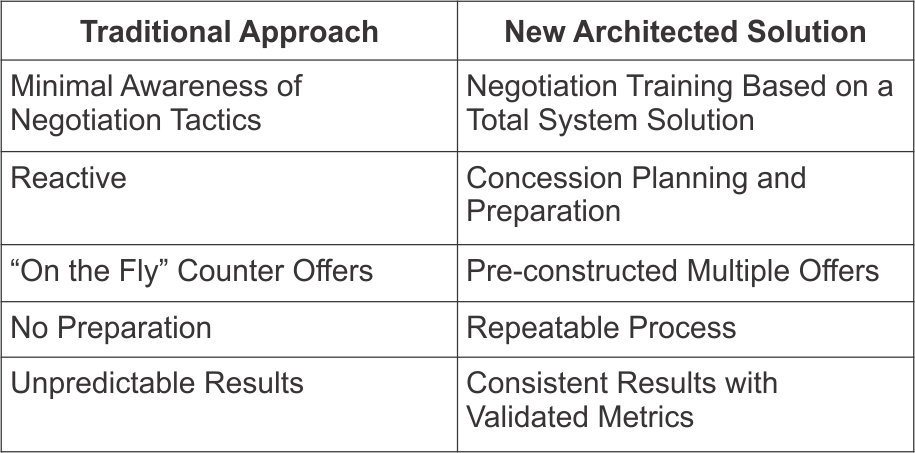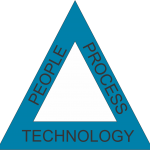 We have all seen aerial pictures with a motivational phrase like “Success… the key to success is to learn to do something right, then do it right every time.” There are strong similarities between mastering the game of golf and mastering highly successful negotiations. They both require learning to do it right and then repeating the success.
We have all seen aerial pictures with a motivational phrase like “Success… the key to success is to learn to do something right, then do it right every time.” There are strong similarities between mastering the game of golf and mastering highly successful negotiations. They both require learning to do it right and then repeating the success.
The best golfers use training, an established routine or process, and tools like scorecards and yardage books to capture key information. Before the match, they determine a course strategy along with goals.
During the match, they reference the yardage book for planning the next shot for distance, placement, and identifying obstacles to success. As the wind changes, real-time adjustments are made to achieve maximum results.
After the match is over, the scorecard represents the results of using the training, the process, and the tools. Historical analysis of the scorecards provides collective results of the strategic and tactical approaches implemented. This analysis will illustrate what was successful and areas for improvement.
Success in Negotiations
In negotiations as in golf, no single element will determine the success. It is a combination of many components, all contributing to the success. The new architecture provides structure to what is today an undefined process.
If you are negotiating deals and you are using a traditional approach, then you are missing key components to repeatable, highly successful negotiations.

Negotiating great deals in the new millennium is more difficult than ever before. It requires more than just someone who can “talk a good game” or “sell an umbrella on a sunny day.” There is more data available than ever before, requiring negotiators to prepare in a new way. Knowing what data is most important for success is critical. For exceptional negotiation outcomes, it requires a new perspective that includes:
- Understanding the psychology of negotiating
- Utilizing a proven process for great outcomes
- Meticulously preparing for each step of the negotiation
- Real-time metrics to manage the process
Components of a Total Negotiation System
Any good operating model must address the 3 key elements of People, Process, and Technology. In addition, it must be able to provide continuous improvement.

Alignment of the New Architecture to the Operating Model
- Training in the science of negotiation (People)
- Defined repeatable negotiation steps and preparation for responses to offers (Process)
- A negotiation software tool that guides users through the process with real-time feedback and metrics. (Technology)
Technology Gap
Prior to the new architecture, negotiations were lacking the Technology portion of the triangle above. Therefore, multiple areas were subject to less than optimal results and no visibility into the negotiation from start to finish.
The first area is the real-time measurements. Effective negotiation teams should be able to:
- Analyze the financial value of initial and counteroffers.
- Measure the financial impact of any concessions.
- Identify how close they are to their target outcome.
- Understand when to walk away.
The second area where technology plays an important role is analytics. Executives need to understand and build insights on team performance that includes:
- How close did the deal come to our goal?
- Did we give too much away?
- What did we gain?
- Did we get the lion’s share of the table stakes?
The third area is process improvement. Only a technology solution can capture historical data for previous deals and report on deal values over time. By analyzing the data, executives and Sales leaders can identify both positive and negative trends. They can utilize the data to identify areas for improvement such as additional training or focus on specific steps in the deal-making process.
Conclusion
Why you should utilize the New Architecture?
The reality is that unless a negotiation system is utilized, the outcomes are not optimal and sometimes disastrous. System solutions enable businesses to achieve higher levels of success and provide data to validate the results. (For more information on negotiation systems, check out the Lionshare podcast with Dish Network.)
The only negotiation system that can consistently achieve great results is one that includes software. Only then can you achieve real-time measurement, access analytics, and continuously improve.
If you are negotiating deals and don’t have a software tool to support your negotiations, then how do you measure the following:
Before the Negotiation
- What are our strengths and weaknesses in this negotiation?
- What are the other party’s strengths and weaknesses?
- What is our goal?
During the Negotiation
- What is our concession plan?
- What is the financial impact of each concession?
- How much did we give away?
- When do we walk away? (This should never be an emotional or “gut” decision, it is based on facts, data, and financials!)
After the Negotiation
- Are we getting better at negotiating?
- Where do we need to improve?
- What did we do differently to get those results?
By combining all the above elements of a total system solution using this new architecture, not only can you achieve great outcomes, you have access to analytics to confirm tangible/ measurable results, and the historical data to continuously improve the outcomes!
Ken McCumber is a consultant and frequent contributor to experts around the world who conduct business negotiations. He can be reached at envoyken@comcast.net.
